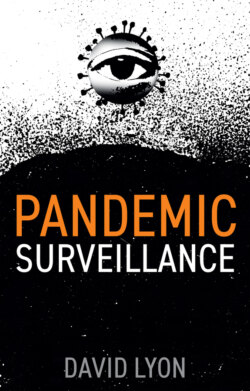Читать книгу Pandemic Surveillance - David Lyon - Страница 11
The burden of this book
ОглавлениеThe burden of this book is that COVID-generated tech solutionism is creating digital infrastructures that tend to downplay negative effects on human life and are likely to persist into the post-pandemic world, endangering human rights and data justice. Many of the proposals and products that have circulated since early in 2020 are highly surveillant. That is, they depend on data that makes people visible in particular ways, representing them to other agents and agencies in those ways, so that those people can be treated accordingly.22
This is why “pandemic” and “surveillance” belong together. Indeed, the drive behind tech-solutionism suggests that at least two meanings may be given to “pandemic surveillance.” One is the obvious existence of a range of surveillance initiatives prompted by the pandemic that invite critical investigation. The other is that these forms of surveillance have grown and mutated so rapidly that their spread might be thought of as “viral.” In other words, there is a pandemic of surveillance.
Let me add a note about how we interpret and explain what is happening in the world of pandemic surveillance. Several perspectives are already evident in what has been said so far. One has to do with the connections between the human and the non-human world – I am thinking of the movement of the virus from animals to humans, in particular – that have such obvious relevance to the outcomes of the pandemic in general, and pandemic surveillance in particular. Another relates to the political economy of pandemic surveillance, in which corporations as well as government play a vital role in what sorts of surveillance occur, who benefits and who is negatively affected. The role of surveillance capitalism should not be underestimated.23
A third is what might be called a “biopolitical” perspective that emphasizes the ambiguity of power in pandemic surveillance. The power involved may be quite repressive, but it is also productive. Pandemic surveillance may lead to life-and-death decisions – who is “disposable?” asks Achille Mbembe.24 But one cannot necessarily tell in advance what sorts of effects will be produced. Then a fourth perspective is “socio-technical,” which looks particularly at the interplay between social and technical factors – especially the socially significant ways in which algorithms are produced, and also how they in turn have impacts on social situations.25
In what follows, I introduce some key themes of pandemic surveillance, chapter by chapter. I should say that, while I am convinced that what follows is a vital exercise – and I have learned a lot from my research – I also stress that what I have done is based very much on secondary sources, and on talking with those with expertise, as well as from personal participation in and observation of the pandemic. The pandemic is ongoing and some of its features, and responses to them, change over time. Nothing is fixed or solid.
I should also note that I write as someone who is a salaried white male, living in a city that has, to date, mainly been but lightly brushed – not brutally bombarded – by the pandemic. I acknowledge that this is a position of privilege and that I write having no first-hand personal experience of the desperate circumstances of many millions, worldwide, especially the colonized, racialized, the oppressed and the neglected. Talking and emailing with colleagues and friends in Australia, Brazil, China, Guatemala, Hong Kong, India, Japan, Israel/Palestine, Singapore, as well as closer to home in Canada and Europe, has given me some feel for others’ realities.
